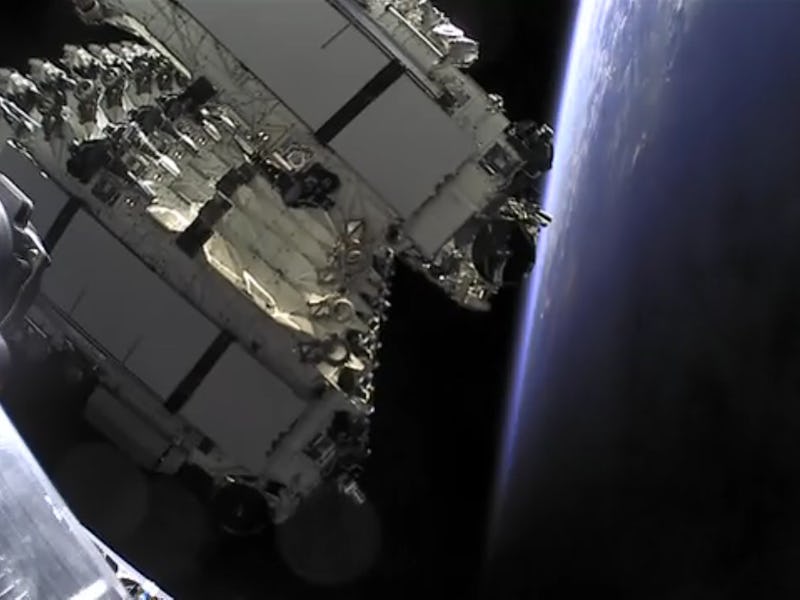Starlink: SpaceX just launched a much-needed boost for internet service
SpaceX kicked off 2022 with a bang.

SpaceX’s first launch of 2022 brings a welcome boost to Starlink.
On Thursday, at 4:49 p.m. Eastern time, a Falcon 9 rocket carrying 49 Starlink satellites launched from Launch Complex 39A at the Kennedy Space Center in Florida. Following the launch, CEO Elon Musk confirmed on Twitter that the new satellites would feature laser links used for faster communication between satellites.
The mission, the first of 2022 and the 134th successful Falcon 9 flight, comes at a time of growth for Starlink. The service promises high speed and low latency internet access to anywhere with a view of the sky, thanks to a lower orbit than competing satellite services and a larger overall number of satellites.
But while fans initially reported speeds of over 200 megabits per second, evidence suggests these speeds have declined as more people join the service. Data from Speedtest released late last year found that Starlink’s median download speed dropped from 97 megabits per second in the second quarter of 2021 to 87 megabits per second in the subsequent quarter.
Speedtest suggested this decline in speed was due to an increase in users. The latest launch, the 35th Starlink mission, should help by adding additional capacity for the service.
During the livestream, the company also confirmed the service has grown since it started accepting customers in late 2020. Starlink now provides services to 25 countries and regions, and has over 145,000 users globally. This suggests a rapid increase in userbase: in July 2021, CNBC reported the service had around 90,000 users.
Want to find out more about how SpaceX and others are transforming spaceflight? Subscribe to MUSK READS+ for exclusive interviews and analysis about spaceflight, electric cars, and more.
Watch the launch below:
This was the fourth launch for this particular booster. It previously flew on the GPS-III missions four and five, as well as the Inspiration4 all-civilian crewed mission to orbit in September 2021.
The launch marked the first time SpaceX had flown to a 53 degree south inclination from the east coast of the United States. The company decided to opt for more favorable weather for recovering the booster and fairing halves during the winter months.
SpaceX has now launched nearly 2,000 Starlink satellites. NASASpaceflight reports that the company’s current focus is on building out the fourth of Starlink’s five orbital shells. At an inclination of 53.2 degrees and an altitude of 540 kilometers (335 miles), this shell should support customers between the 52 degrees latitudes north and south.
The first shell has 1,556 satellites in orbit. SpaceX is also building out the second shell, with the third and fifth shells lowest priority. The company has applied for permission to launch up to 42,000 satellites overall.
The booster successfully landed on the drone ship A Shortfall of Gravitas after the launch. This marked the 101st successful recovery of a first-stage booster.
SpaceX Starlink: When will it come to my area?
Starlink launches mean increased capacity for the service, which could mean a more significant rollout to other areas.
Unfortunately, the company’s rollout remains somewhat opaque. The Starlink website enables users to place a deposit for the service and provides an estimate of when the service may come to the user’s area.
In November 2021, Ars Technica reported that some users saw their orders delayed to 2023 by moving their location a few feet. As SpaceX continues to build out the constellation, it should hopefully give the company the capacity to expand its service faster to those that need it.
SUBSCRIBE TO MUSK READS+, A PREMIUM NEWSLETTER THAT COVERS THE WORLDS OF ELON MUSK, SPACEX, TESLA, AND EVERYTHING BETWEEN.